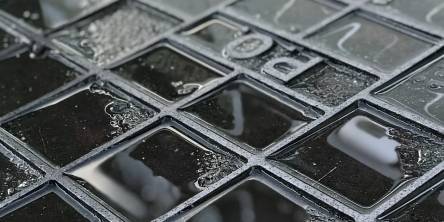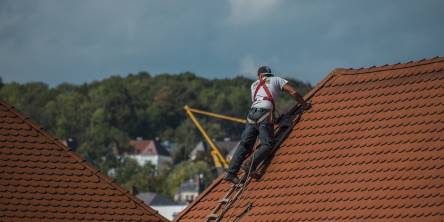Subfloor Preparation: 13 Steps to Prepare Subfloor for Tile
One of the most important steps of any flooring project is making sure the subfloor foundation is level. Below are thirteen steps on how to prepare the subfloor for tile.
1. Rip Up The Old Flooring
Whether you have carpet, hardwood, or tile, the old flooring has to go. Use a crowbar to pry up hardwood and tile. Subfloor for tile often has old grout and adhesive that needs to be chiseled away. Carpet can be cut on one side and rolled or cut into smaller strips with a razor knife and pulled out. If linoleum is too hard to remove or damages the subfloor when removed, leave it and install new flooring over the top.
2. Check How Even The Subflooring Is
Use a level every few feet to check how even the floor is. Installing subfloors is not an exact science and most floors are not perfectly even. But if they differ 3/16 of an inch every 10 feet, that is an acceptable level. Here you can get info on sub floor thickness. However, if the floor slopes more than that measurement, you will know where you need to sand and fill with flooring compound. For instance, if the floor slopes by an inch within 3 feet, that will have to be fixed before installing a new floor. Map out where the floor will need leveling compound and sanding.
3. Sand the Subflooring
If there are humps or high spots in the wood subflooring, you can easily level them out by sanding down the subfloor with an electric sander. Be sure to wear eye protection at this stage. Wear clothing that you don't care too much about as sawdust tends to stick to clothing like glue and isn't good for washing machines.
4. Clean and Fix Subflooring
Once all the sanding is done, the whole floor needs to be thoroughly swept and vacuumed so that no dust or debris remains. If there are cracks or chips in the subflooring, fix them with a filler and let them dry. Mop the entire area with clean water to prepare it for the bonding agent.
5. Put Bonding Agent All Over Subflooring
Put the bonding agent in the corners and edges of the room first with a soft paintbrush. Once all the corners and edges are done, use a large roller to apply the bonding agent to the middle of the room until the floor is completely coated. Wear clothing that you won't mind throwing away afterward because the bonding agent will ruin it.
6. Mix Leveling Compound
Now that the floor is sticky, it is time to prepare the leveling compound which will make the floor even. Put the powder compound in a large bucket and add lukewarm water until it thickens to about the consistency of the pancake batter. Mix it thoroughly but work fast before it starts to harden.
7. Pour the Leveling Compound
With a bucket in hand, start in one of the corners of the room opposite the door. Pour the compound on the floor no more than a quarter to a half an inch thick in the areas that slope too low according to the map you made earlier when you tested the floor's evenness. You will want to put a thin coat on the entire floor and the compound will naturally pool in areas where it is needed most. Work your way backward until you cover the whole floor and are able to back out of the doorway.
8. Smooth Out the Leveling Compound
Once you have finished pouring, take a hand trowel to start smoothing out lumps and imperfections. Watch out for pools that dry close together and form seams and cracks. Smooth out the entire floor with consistent pressure to avoid creating deep grooves.
9. Let the Compound Dry
Though the compound dries within minutes, let it dry overnight to achieve maximum hardness. Then you can continue the flooring project with no worries.
10. Sand the Floor Again
To even out the rough spots and lumps, go over the floor with the electric sander again on the dry floor. At first, use a large grit paper and then gradually use smoother ones.
11. Clean the Subfloor
Before you check how level it is, the dust and debris will have to be cleaned from the subfloor. Sweep and vacuum until the floor is clean. Mop it with clean water just to make sure.
12. Check How Even the Floor is Again
Just like in step #2, use a level every few feet to check how even the floor is. Once again, the slope shouldn't be off by more than 3/16 of an inch every 10 feet. If the slope is off more than that, you may need to go back and do more sanding or add more leveling compounds in certain areas until the floor is even. The best subfloor for tile especially has to be even, otherwise, tiles could stick up and break easily or trip home occupants.
13. Put in the New Floor
Now that the subfloor is level, you can proceed to install the new floor of your choice. Subfloor preparation is the most important step in creating a new, even floor. Depending on what kind of flooring you choose, you may need to do extra preparations on the subfloor. Just check the instructions for the flooring you choose to get more details.
Similar Articles
Learn how a tidy home boosts mental health, reduces stress, improves productivity, and enhances well-being with simple, practical cleaning tips.
Have you ever harboured dreams of constructing your dream home filled with bespoke designs, carefully selected fittings and high-quality finishes? Have you ever fretted over the durability, aesthetics, and overall quality of your construction project? Are you constantly in search for the perfect balance between beauty and strength?
Cockroaches are one of the most common pests found in homes and businesses, and they are known for their resilience and ability to thrive in even the most unsanitary conditions. These pests can quickly infest kitchens, bathrooms, and other areas, spreading bacteria, allergens, and other harmful pathogens.
A well-maintained yard drainage system is key to preserving the beauty and health of any property. Poor drainage can lead to standing water, soil erosion, and even foundational damage to structures over time.
Keep your seaside home in top shape with these 4 expert tips! Learn about weatherproof materials, smart maintenance, and managing coastal challenges effectively.
Explore the future of roofing! Discover energy-efficient materials, smart systems, and sustainable designs reshaping modern home construction trends.
HVAC stands for heating, ventilation, and air conditioning. These all-in-one systems keep your home comfortable and improve air quality throughout a building. Often used in commercial buildings, HVAC units are increasingly used in residential buildings.
Safeguard your home after storms with timely roof repairs. Detect damage early, choose durable materials, and rely on a pro for lasting protection and peace of mind.
Learn how to balance a clean home and family life with these 6 practical tips to manage clutter, involve kids in chores, and set realistic expectations.









